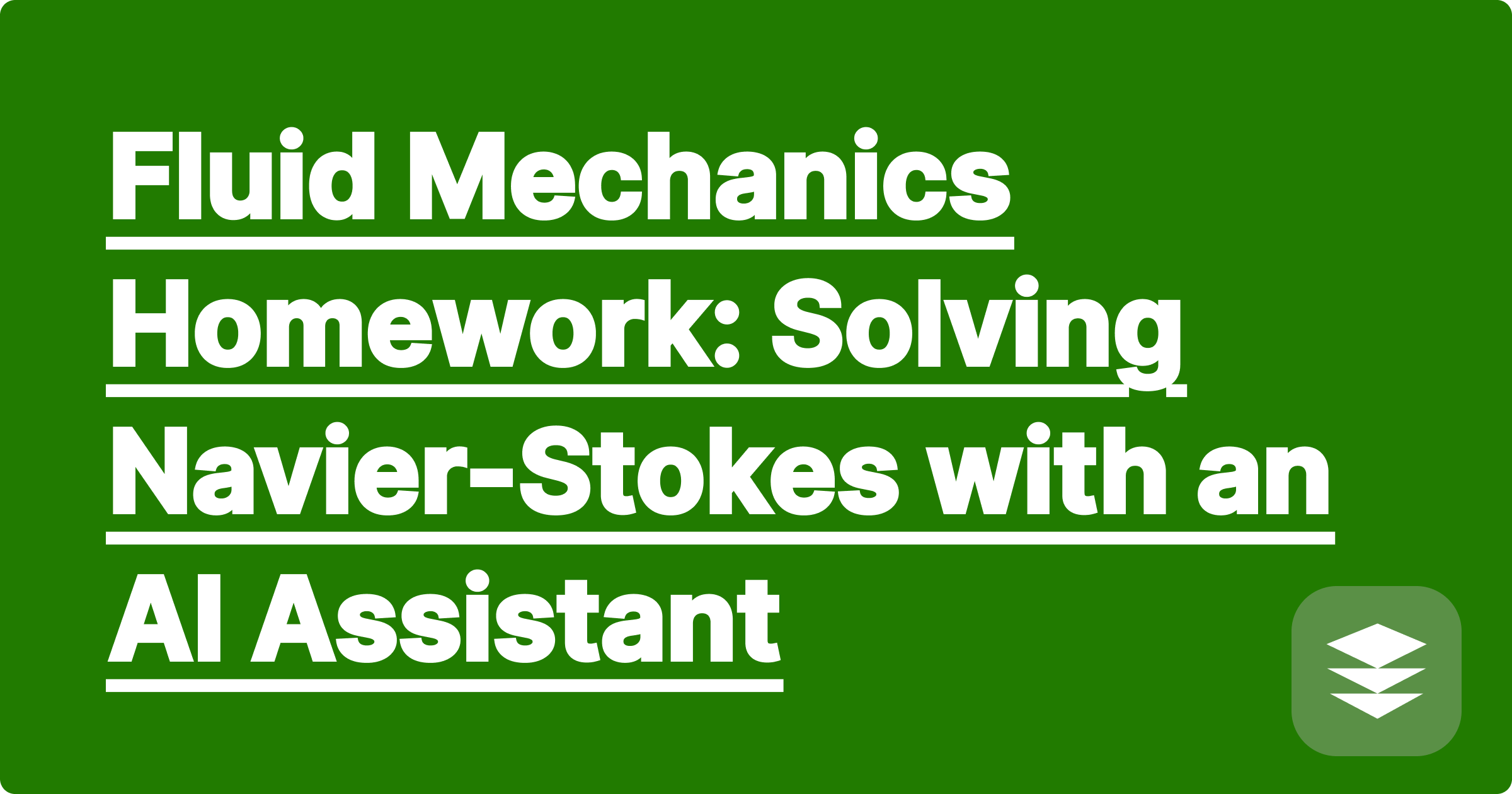
For many engineering and physics students, the first encounter with the Navier-Stokes equations is a moment of both awe and terror. This set of coupled, non-linear partial differential equations governs the motion of every fluid on Earth, from the air flowing over a wing to the blood pumping through your veins. They are notoriously difficult to solve, with a $1 million prize offered for a proof of their general behavior. So, how are you expected to handle them in your homework?
The secret is that in an academic setting, you're almost never asked to solve the full equations. Instead, you're taught to simplify them based on a set of assumptions (e.g., steady, incompressible, laminar flow). The real challenge is knowing which assumptions to apply and how they simplify the equations. This is where getting fluid mechanics homework help from an intelligent AI assistant can be a game-changer.
The difficulty of fluid mechanics homework stems from several factors that make the Navier-Stokes equations particularly challenging:
Students often get stuck not on the final integration, but on the initial setup and simplification. You need a guide that can help you navigate this conceptual maze.
A generic calculator is useless here. You need a Navier Stokes equation solver that understands the physics. A tool like GPAI Solver is trained on these principles, acting as a virtual TA that can guide you through the logic.
Here’s how it helps:
Let's consider a classic problem: steady, incompressible, laminar flow between two infinite parallel plates, where the top plate moves at a constant velocity U and the bottom plate is stationary (Couette flow).
A major part of fluid mechanics is developing an intuition for how fluids behave. An AI assistant can help here too. You can ask conceptual questions that go beyond a single homework problem:
By using AI as a conversational partner, you can explore the concepts behind the equations, leading to a much deeper and more durable understanding of the subject.
Q1: Can an AI solve any Navier-Stokes problem?
A: No. The full equations are unsolved for the general case. However, an AI is extremely proficient at solving the wide range of simplified cases that are taught in undergraduate and graduate engineering courses (e.g., pipe flow, flow over a plate, etc.). It excels at the problems you will actually encounter on your homework and exams.
Q2: Is it better to use a dedicated CFD software package?
A: Computational Fluid Dynamics (CFD) software like ANSYS Fluent or OpenFOAM is for complex, industrial-scale simulations. For learning the fundamental theory and solving textbook problems, a Navier Stokes equation solver like GPAI is a much more direct and educational tool. It focuses on the analytical solutions that teach you the core principles.
Q3: How can I trust the AI's derivation?
A: A good AI tool shows its work. You can follow every single step of the simplification and integration process. This transparency allows you to verify the logic against your lecture notes and textbook, building confidence in the result while reinforcing your own learning.
Fluid mechanics is one of the most powerful and beautiful subjects in engineering. Don't let the intimidating mathematics prevent you from mastering it. By using an AI assistant as your personal tutor, you can break down the most complex equations, understand the underlying assumptions, and develop the deep, conceptual intuition you need to succeed.
Ready to get the best fluid mechanics homework help available?
[Try GPAI Solver today. Upload your first fluid dynamics problem and let our AI guide you through the solution. Sign up for 100 free credits.]
Why Mechanics of Materials is All About Free-Body Diagrams: An AI Approach
Fluid Mechanics Homework: Solving Navier-Stokes with an AI Assistant
From Theory to CAD: How AI Can Help You Visualize 3D Designs
Master Heat Transfer: An AI Tool for Conduction and Convection Problems
Your Ultimate Guide to Surviving Dynamics: From Kinematics to Vibrations
How to Write a Professional Engineering Lab Report with AI-Assisted Analysis
The Smartest Way to Create a Machine Design Formula Sheet
Control Systems Explained: Using AI to Understand Laplace Transforms and Bode Plots
Why Did My Finite Element Analysis (FEA) Fail? An AI Debugging Guide
The Engineer's Toolkit: How AI Integrates Math, Physics, and Design